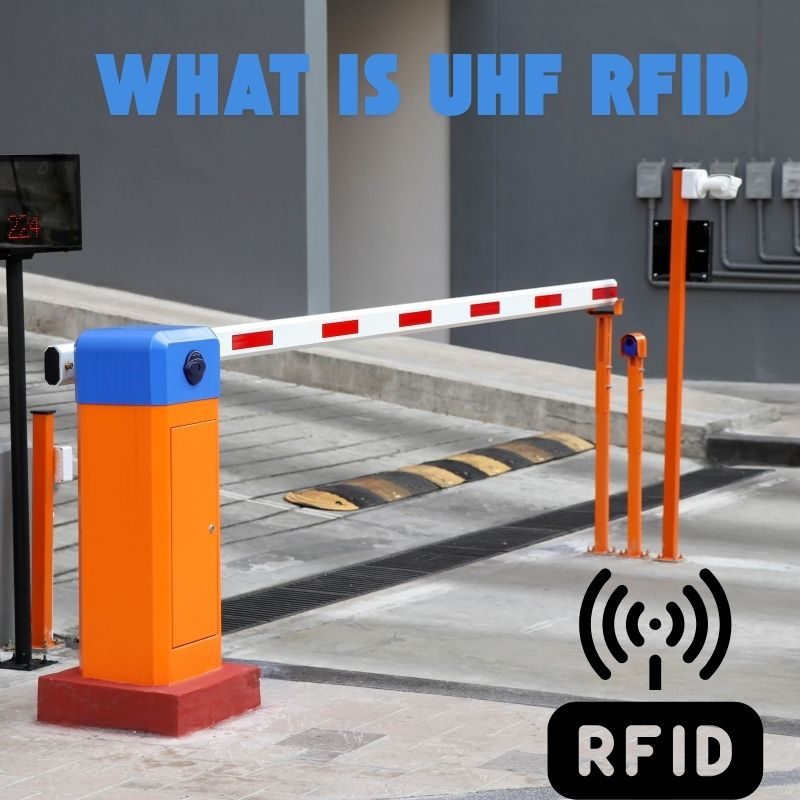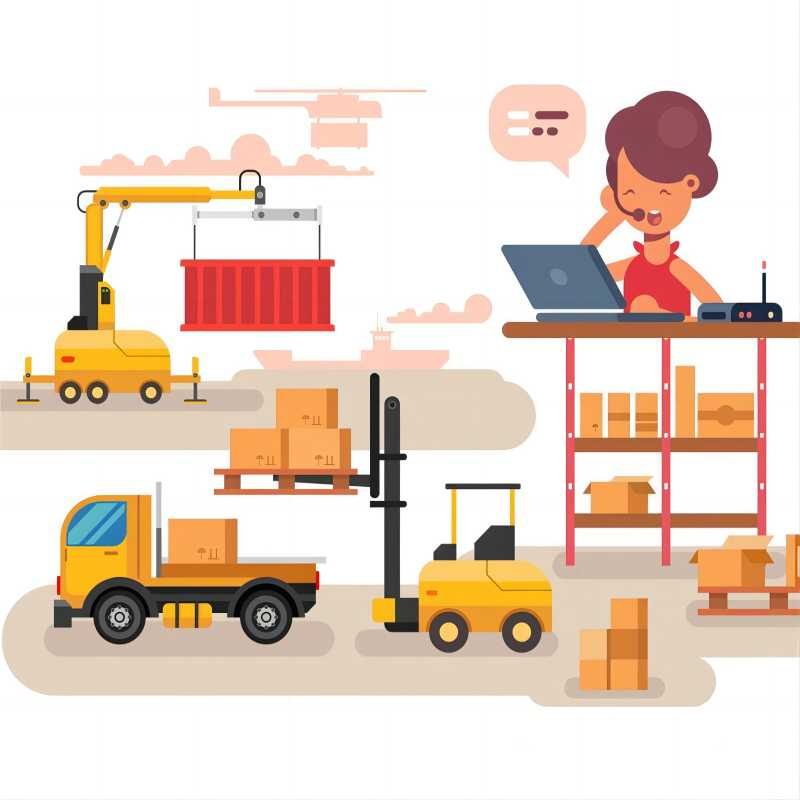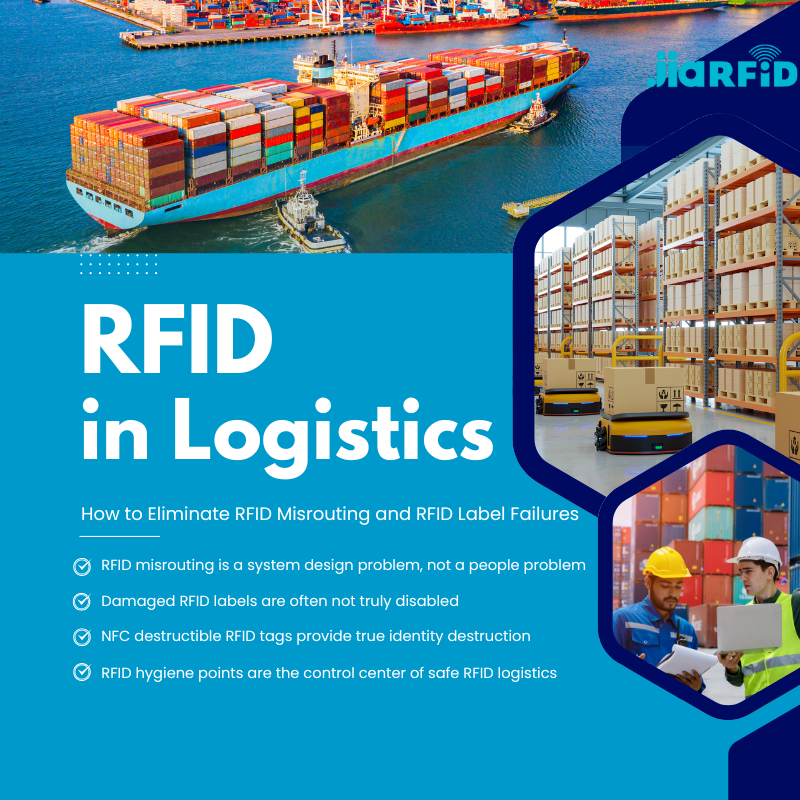
UHF RFIDとは何ですか?
目次
導入
UHF RFID 超高周波無線周波数識別(UHF RFID)は、様々な産業分野で急速に普及が進む最先端の識別技術である。小売業や物流から医療・農業に至るまで、高速かつ非接触でのデータ交換を可能にするその能力は、企業の業務形態を変革しつつある。.
初めてRFIDを探求する方でも、理解を深めたい方でも、このガイドがRFIDの基本から応用までをわかりやすく解説します。 UHF RFID その仕組み、応用例、そして2025年に必須となる技術である理由について。.

UHF RFIDとは何ですか?
UHF RFID(ウルトラハイ・フリークエンシー無線周波数識別)は、電波を用いて物体に付着したタグを識別・追跡する無線通信技術である。これはRFID技術の3大周波数帯域の一つであり、他の2つは低周波(LF)と高周波(HF)である。.
UHFは通常860MHzから960MHzの範囲で動作し、以下でよく知られています:
- より長い読み取り範囲(最大12メートル以上)
- より高速なデータ伝送
- 一括読み取り機能
簡単に言えば、UHF RFIDはデジタル版の「強化バーコード」のようなものだ。視線が必要なく、数百のアイテムを瞬時に読み取ることができる。.
UHF RFIDはどのように機能しますか?
UHF RFIDの機能を理解するために、その中核となる構成要素を見てみましょう:
- RFIDタグ: データを保存するマイクロチップとアンテナを内蔵する。.
- RFIDリーダー: 電波を発信し、タグからデータを受信する。.
- アンテナ: タグとリーダー間の信号を増幅する。.
- ミドルウェア/ソフトウェア: 収集したデータを処理および管理する。.
主に二種類ある UHF RFIDタグ:
- パッシブUHFタグ: 読取装置の信号からの電力に依存する方式。より安価で一般的に使用されている。.
- アクティブUHFタグ: 電池駆動式;長距離およびリアルタイム用途に適している。.
主要機能:
- リーダーはUHF帯で信号を発信する。.
- タグはエネルギーを受け取り、電源が入ると、データを送信する。.
- リーダーはこのデータを収集し、処理のためにバックエンドシステムに送信します。.
システムは複数のタグを同時に読み取ることができ、高速時でも動作します。これによりUHF RFIDは、コンベアベルトや高速移動する在庫品といった動的な環境に最適です。.
UHF RFID技術の利点
なぜUHF RFIDがこれほど注目を集めているのか?それは現実世界の追跡と自動化の課題を解決するからだ。主な利点は以下の通り:
- 長い読み取り範囲: 最大12メートル、過酷な環境下でも
- 一括読み込み: 数秒で数百のタグを読み取る
- コスト効率に優れている: パッシブタグは大規模な利用に低コストで対応可能である
- リアルタイムの可視性: 在庫と資産の移動に関する即時更新
- 非視界内: バーコードのように直接スキャンする必要はありません
- スケーラビリティ: 小規模な事業にも、グローバルなサプライチェーンにも適しています
要するに、それは効率性、正確性、自動化を向上させる——現代のビジネスを支える重要な柱である。.
UHF RFIDの一般的な応用例
UHF RFIDは現代の自動化および追跡システムにおける中核技術として台頭し、卓越した通信距離、速度、汎用性を提供している。数百のタグを同時に、かつ長距離で読み取る能力により、幅広い産業分野で非常に有用である。.
小売り
- 在庫管理
- 盗難防止システム
- 自動チェックアウト
- リアルタイム在庫更新
物流・サプライチェーン
- 出荷追跡
- パレット管理
- クロスドッキング作業
- 配達証明
製造業
- 仕掛品(WIP)のトラッキング
- 品質管理
- 機器監視
健康管理
- 患者用リストバンド
- 機器追跡
- 医薬品在庫
農業
- 家畜の監視
- 農業機械追跡
- スマート灌漑システム
図書館・教育
- 書籍追跡
- 実験室資産管理
- アクセス制御
業界を問わず、UHF RFIDはリアルタイムの可視性、効率性、追跡可能性を提供します。.
UHF RFIDとHF/LF RFIDの主な違い
| 特徴 | LF(低周波) | HF(高周波) | UHF(極超短波) |
|---|---|---|---|
| 頻度 | 125-134 kHz | 13.56 MHz | 860-960 MHz |
| 読み取り範囲 | 約10cm | ~1 m | 最大12メートル |
| データ速度 | 遅い | 適度 | 速い |
| 料金 | 低い | 適度 | 変動あり |
| ユースケース | 動物追跡 | 非接触型決済 | サプライチェーン、小売、物流 |
UHF RFIDは最長の読み取り距離と最速の性能を提供するため、高速な環境や大量追跡に最適です。.
UHF帯RFID規格と規制
規格は、互換性を確保するためにUHF RFIDの世界的な使用を規定する:
- EPCglobal Gen2 / ISO 18000-6C: 受動型UHF RFIDの業界標準
- FCC(米国連邦通信委員会): 902~928 MHzで動作する
- ETSI(欧州): 865~868 MHzで動作する
- その他の地域: 通信規制により若干異なる場合があります
UHF RFIDをグローバルに展開する際には、地域の周波数規制への準拠を確保することが極めて重要です。.
UHF RFIDタグの種類
パッシブ型UHF帯RFIDタグ
- 最も一般的な
- コスト効率が良い
- 小売、物流などで使用される.
アクティブUHF RFIDタグ
- 電池式
- より長い範囲
- 高価値資産の追跡に使用される
セミパッシブ(BAP)タグ
- バッテリー補助により性能向上
タグのフォームファクター
- 象嵌
- ラベル
- ハードタグ
- 金属または過酷な環境向けの耐環境性タグ
環境、必要範囲、予算に基づいてタグの種類を選択してください。.
UHF RFIDの課題と限界
他の技術と同様、UHF RFIDにも欠点があります。考慮すべき点は以下の通りです:
- 金属と液体の干渉: 信号を遮断または歪ませることがあります
- 環境要因: 極端な温度は性能に影響を与える可能性があります
- 視界制限: 密なスタック内のタグは確実に読み取れない可能性がある
- 初期費用: インフラの構築には費用がかかる場合があります
- データ過多: 大規模なデータ収集を処理するための堅牢なソフトウェアが必要である
しかし、慎重な計画を立てれば、これらの制約は最小限に抑えられるか、あるいは完全に緩和される。.

UHF RFIDの将来動向(2025年以降)
UHF RFIDは定着しただけでなく、急速に進化している。主なトレンドは以下の通り:
- IoTとの統合: スマートセンサー + RFID = 強力なデータインサイト
- クラウドベースのRFIDシステム: どこからでもタグを管理
- AIと機械学習: RFIDデータを用いた予測分析
- スマートシティとインフラストラクチャー: 交通流、廃棄物管理、その他
- インダストリー4.0: リアルタイム工場自動化とデジタルツイン
コスト削減と性能向上により、今世紀末までに業界全体での大規模導入が期待される。.
UHF RFIDは貴社に適していますか?
UHF RFIDは、手作業によるプロセス削減、損失の低減、可視性の向上を実現する強力な拡張性技術です。倉庫管理から高価値医療機器の追跡まで、長距離・高速データ収集のメリットは業界を変革するものです。.
しかし、あらゆる技術と同様に、その強みを理解し正しく活用することこそが成功の鍵である。.
貴社のビジネスにUHF RFIDを導入する準備はできていますか?まずは専門家にご相談ください。 信頼できるRFIDソリューションプロバイダー または、ニーズを評価するためのパイロットプログラムを実施すること。.
UHF RFIDテクノロジーに関するよくある質問
UHF RFIDは何の略ですか?
UHF RFIDは、超高周波無線周波数識別(Ultra-High Frequency Radio Frequency Identification)の略称である。これは860~960MHzの周波数帯で動作し、数メートル離れた位置からタグを読み取ることができるRFIDシステムを指す。.
UHF RFIDはどのように機能しますか?
UHF RFIDシステムは、リーダーとタグ間の通信に電波を利用します。リーダーが発信する信号がパッシブタグを起動させ、タグはデータをリーダーに送信します。これにより、直接の視線が必要なく、物体の迅速な無線識別が可能となります。.
UHF RFIDシステムの通信距離はどれくらいですか?
UHF RFIDシステムは、パッシブタグの場合、通常3~12メートル(10~40フィート)の読み取り範囲を有します。電池式アクティブタグは範囲を大幅に拡張でき、場合によっては100メートル以上に達することもあります。.

レイ・ジョウ
この記事は、RFID技術の専門家であり、10年以上の業界経験を持つRay Zhouが執筆した。
コメント
人気商品

物流におけるRFID:RFID誤配送とRFIDラベル故障の解消方法
物流におけるRFIDは、単にプロセスを迅速化するツール以上の存在である。現代のサプライチェーンが機能する上で、その重要な要素となっている。.

RFID廃棄物管理とは何か
想像してみてください。街中のゴミ箱がすべて「話す」街を――文字通りではなく――小さなチップを通じて、満杯になった時、空になった時、そしてどこへ運ばれたかをシステムに伝えるのです。それが今日のRFID廃棄物管理の仕組みです。.

ボルトシールとその用途とは?| 完全ガイド
世界的な貿易と物流において、ボルトシールは貨物のセキュリティとコンプライアンスを確保する上で重要な役割を果たしています。これらの小型で強力なデバイスは、タンパーエビデント機構で輸送コンテナ、トレーラー、貨物ドアをロックするように設計されています。

RFIDカードプロテクターとは?メリット、使用例、購入ガイド
RFID(Radio Frequency Identification)テクノロジーは、クレジットカード、IDバッジ、定期券、ホテルのルームキーなど、あらゆるところに浸透している。RFIDはスピードと利便性を提供する一方で、「スキミング」と呼ばれる新たなデジタル窃盗への扉も開いている。そこでRFIDカードプロテクターの出番です。

イベント用RFIDリストバンド:主催者向け一括購入ガイド
イベント用RFIDリストバンドは、コンサート、フェスティバル、スポーツ会場などで、迅速な入場、不正防止、キャッシュレス決済を必要とする主催者にとって、最適なソリューションになりつつあります。紙のチケットやQRコードとは異なり、これらのスマートリストバンドは埋め込みチップを使用し、アクセスを合理化し、取引を安全にし、ゲストの体験を向上させます。

フロントガラス上のRFIDタグが車両入退場管理と料金システムを改善する方法
ペースの速い今日の世界では、車両識別は迅速、安全、非接触である必要があります。フロントガラス上のRFIDタグは、まさにそれを提供します-車両を止めることなく、料金徴収、駐車、ゲートアクセスを管理する信頼性の高い方法です。
タグ
関連ブログ

物流におけるRFID:RFID誤配送とRFIDラベル故障の解消方法
物流におけるRFIDは、単にプロセスを迅速化するツール以上の存在である。現代のサプライチェーンが機能する上で、その重要な要素となっている。.

RFID廃棄物管理とは何か
想像してみてください。街中のゴミ箱がすべて「話す」街を――文字通りではなく――小さなチップを通じて、満杯になった時、空になった時、そしてどこへ運ばれたかをシステムに伝えるのです。それが今日のRFID廃棄物管理の仕組みです。.

ボルトシールとその用途とは?| 完全ガイド
世界的な貿易と物流において、ボルトシールは貨物のセキュリティとコンプライアンスを確保する上で重要な役割を果たしています。これらの小型で強力なデバイスは、タンパーエビデント機構で輸送コンテナ、トレーラー、貨物ドアをロックするように設計されています。




